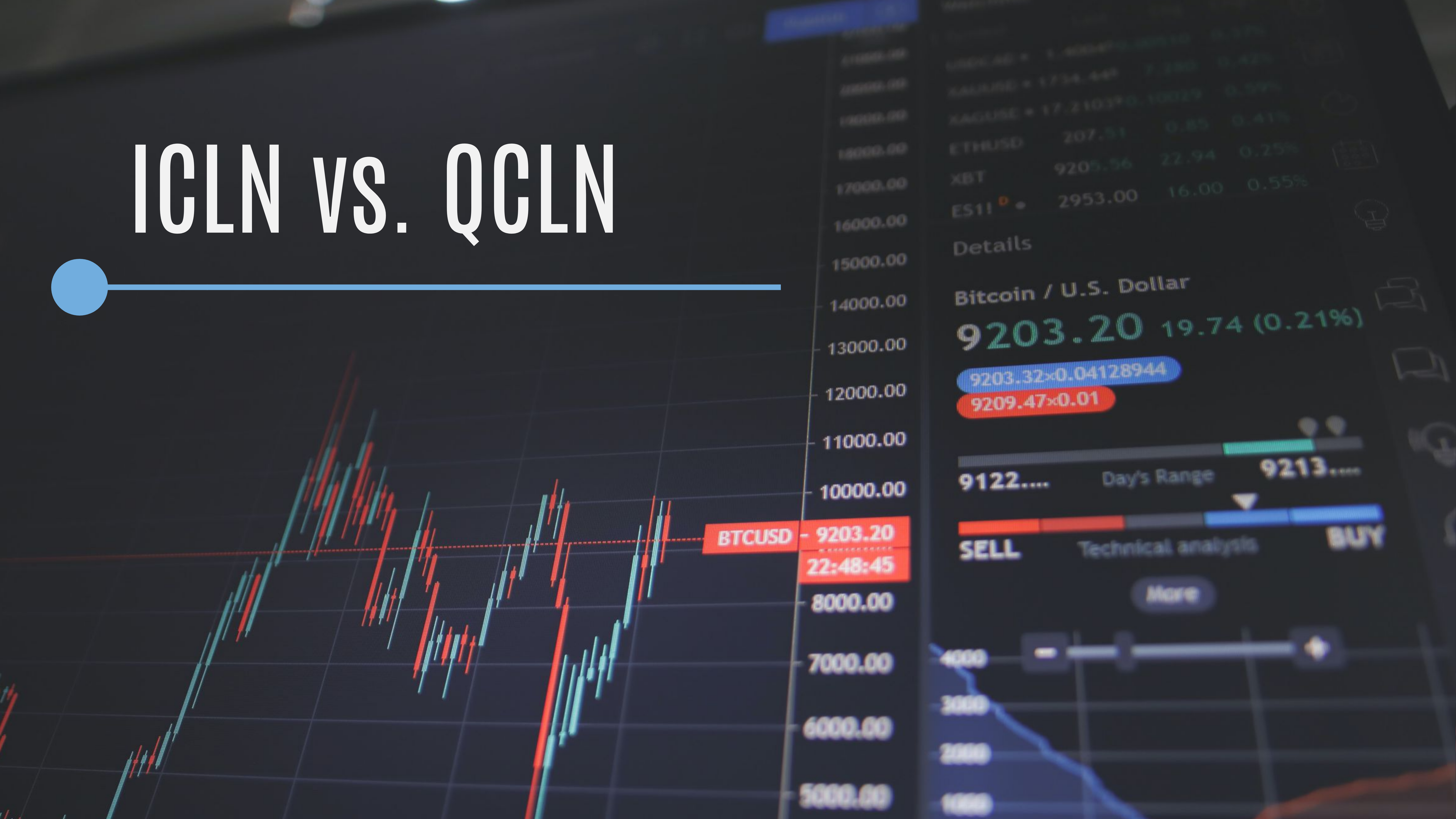ICLN vs. QCLN: What's the Difference?

Written by
Justin Kuepper
Published on
Feb 01, 2022
Last updated
Feb 01, 2022
The iShares Global Clean Energy ETF (ICLN) and the First Trust NASDAQ Clean Edge Green Energy ETF (QCLN) are two of the most popular clean energy ETFs. But, of course, it's hard to know the difference between the two options with their similar names and ticker symbols.
Let's take a quick look at the differences so that you can make a more informed decision on the right option for your portfolio.
ICLN vs. QCLN At-a-Glance
| ICLN | QCLN | |
| Total Assets | $4,808,718,745 | $2,246,521,536 |
| Expense Ratio | 0.42% | 0.60% |
| Dividend Yield | 1.34% | 0.01% |
| Largest Holdings | Vestas Wind Systems (8.03%) Enphase Energy Inc. (7.36%) Consolidated Edison (6.61%) |
Tesla Inc. (8.78%) Albemarle Corporation (8.56%) ON Semiconductor Corp. (8.42%) |

ICLN vs. QCLN Performance (1 Year) - Source: BarChart.com
ICLN vs. QCLN Portfolio Differences
The iShares Global Clean Energy ETF (ICLN) provides exposure to companies that produce energy from solar, wind, and other renewable sources. Moreover, the fund invests in renewable energy projects worldwide, providing global exposure to the industry. Thanks to its sharp focus, the fund has an MSCI ESG rating of AAA—the top tier.
On the other hand, the First Trust NASDAQ Clean Edge Green Energy ETF (QCLN) tracks clean energy companies, including those engaged in the manufacturing, development, distribution, and installation of emerging clean-energy technologies, including solar, wind, batteries, fuel cells, and electric vehicles. And the fund's MSCI ESG rating is A—a mid-tier.
In summary, ICLN provides exposure to global renewable energy projects while QCLN takes a broader approach, offering access to ancillary businesses involved with renewable energy. That's why QCLN holds companies like Tesla, whereas ICLN focuses on solar/wind farms and utilities, such as Vestas or Consolidated Edison.
What's Right for Your Portfolio?
The choice between ICLN vs. QCLN depends on your investment objectives. If you're looking for the most sustainable option, ICLN has a higher MSCI ESG rating thanks to its focus on renewable energy producers. But, if you're looking for performance or diversification, QCLN offers diverse exposure to potentially-higher growth companies.
ICLN also offers an attractive dividend yield, making it the best option for income investors. For example, retirement investors looking to supplement their income with dividends while still positively impacting the world can use ICLN to achieve both goals. On the other hand, QCLN doesn't offer a meaningful dividend due to its focus on high-tech stocks.
It's also worth keeping in mind that ICLN has a lower expense ratio and more assets under management. As a result, investors will pay less in fees over time and benefit from greater liquidity. That said, both funds have enough daily trading volume that liquidity probably won't be an issue for retail investors—only considerable funds moving in and out.
Alternatives to Consider
ICLN and QCLN both offer exposure to renewable energy companies, but they aren't the only options for investors. Those that want exposure in the stock market can choose from a variety of different ETFs and mutual funds, including new entrants, like the JPMorgan Climate Change Solutions ETF (TEMP)—an actively managed fund in the space.
Regulation CF also opened the door to numerous private crowdfunding opportunities. For example, Energea lets anyone invest in renewable energy projects and generate 11%+ IRR with global diversification, whereas Renewables offers a compelling 6% APY with investments as low as $100. Find these and other crowdfunding opportunities on VirtueScout.
